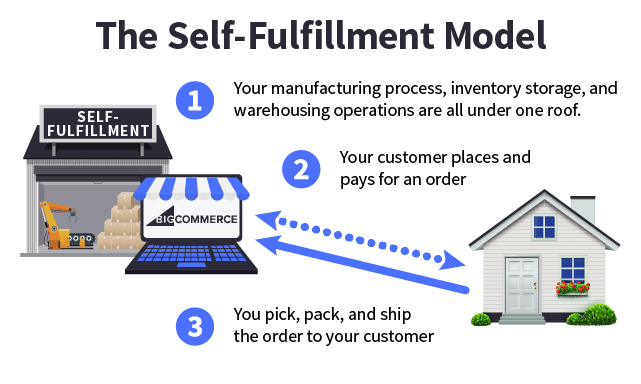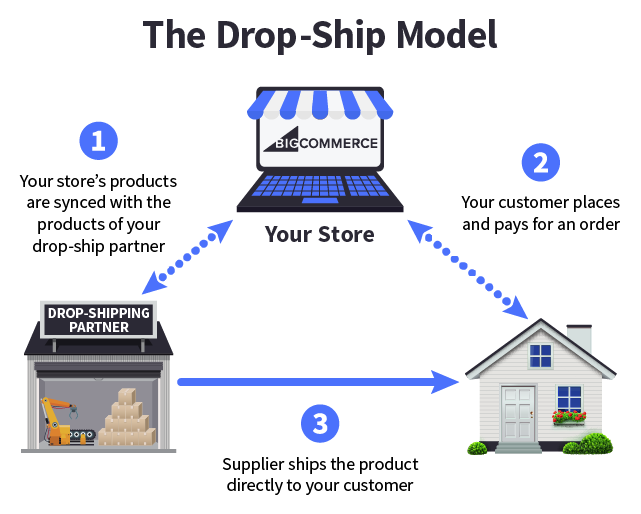Order fulfillment is the most important phase in a successful e-commerce transaction – it’s the time when your business actually meets your customers, greets them with a loud and clear ‘Hello!’ and completes the deal. Everything prior to that – like your award-worthy website design, slick user interface, and effortless checkout process – are just accessories that lead to this phase of receiving, processing, and delivering orders to your end customers. Order fulfillment is the stage where you create a lifelong relationship with customers or leave them as one-and-done purchases and end any potential long term opportunities on the table. Thus, needless to say, choosing or crafting the right order fulfillment strategy is critical to any e-commerce business.
(Source: eliteops)
Your order fulfillment strategy determines how easily and quickly you can scale your business. A wrong choice can leave your business stuck while your competitors pass you by. Moreover, customer expectations change by the minute. Same day delivery and on-demand delivery are mainstream now. The idea of waiting for a package to be delivered is slowly fading into oblivion. E-commerce players need to equip themselves with a well-crafted order fulfillment strategy that will accelerate their receiving, processing, and delivery of orders.
Most Popular Order Fulfillment Strategies
There are arguably the three most popular order fulfillment strategies you can consider for your e-commerce business. They are:
Direct Fulfillment

(Source: BigCommerce)
Direct fulfillment is a DIY type of order fulfillment strategy. It is adopted by businesses from both ends of the spectrum alike – future entrepreneurs who are working out of tiny garages as well as juggernaut corporations who have a global business presence. While direct fulfillment gives total control over your order fulfillment process, it also demands effort, biting off your time from other important tasks that require your attention.
Third-Party Fulfillment

(Source: BigCommerce)
In this order fulfillment strategy, fulfillment is taken over entirely by third-party logistics (3PLs) who do everything from storing the inventory to managing, packing, labeling, and shipping it to customers. The upside of outsourcing to 3PLs is that you will have more time to focus on other highly demanding aspects of your business like customer service, marketing, product expansions, etc.
Dropshipping

(Source: BigCommerce)
Dropshipping saves e-commerce business owners from inventory management, packing, and shipping headaches. This order fulfillment model works by dispatching the goods directly from the manufacturer or vendor’s warehouse to the customer location. Dropshipping has been hailed as the saving grace for small-scale business owners, especially those who sell small-scale products like coffee mugs, paper notebooks, t-shirts, etc. to a specific market. It works wonders if you sell to a niche market with minimal competition.
Factors to consider
Choosing a suitable order fulfillment strategy from these three models can prove quite challenging. Here are 5 factors to consider when evaluating the options for your business:
1. Scale of operation
Just how big is your e-commerce business really? Do you operate from your home or do you operate from commercial office space – or do you have your own network of warehouses and distribution centers? Small scale operations might want to opt for drop-shipping or engage with a 3PL.
2. Order processing system
If you have thousands of orders pouring in on a single day that need to be processed and dispatched on THAT same day, you are going to need some serious ERP firepower on your side. You can choose to invest in a full-fledged ERP system, subscribe to a cloud-based system, or engage a 3PL to do the task for you. In contrast, if you have very few orders that can be processed individually, direct fulfillment may be the way to go.
3. Packaging & Shipping
Product packing, shipping, and inventory management need micro-level management and the utmost attention to detail. If your business caters to a niche type of audience with highly customized offerings, dropshipping or 3PL order fulfillment may not work as effectively as direct fulfillment. On the other hand, if you primarily ship the same type of products/packages, drop-shipping and 3PL order fulfillment can prove to be a cost-effective choice.
4. Warehousing
Running a warehouse requires a large amount of space, administrative personnel, and infrastructure. 3PL can bring those benefits to your business for a moderate cost. Dropshipping, on the contrary, saves you from any trouble related to owning or managing the inventory. Direct fulfillment would require you to create everything from scratch – by yourself – to run the order fulfillment process smoothly.
5. Inventory management
If you can’t afford (or don’t want to) purchase and manage inventory, dropshipping is an ideal choice. Direct fulfillment and 3PL order fulfillment are the best choices if you have a diverse inventory portfolio that fluctuates in volume all through the year. 3PL players can also bring the efficiency of an inventory management system to keep your bottom line in good shape at all times.

(Source: HawkGraphics)
There are several factors that influence the selection of an order fulfillment strategy and there is no one-size solution. You have to evaluate your business needs and correlate them against the pros and cons of direct fulfillment, dropshipping, and 3PL.

>>> Read more: Optimize Sales During Covid-19 Pandemic
>>> Read more: Tips To Promote Selling on E-commerce Platforms

